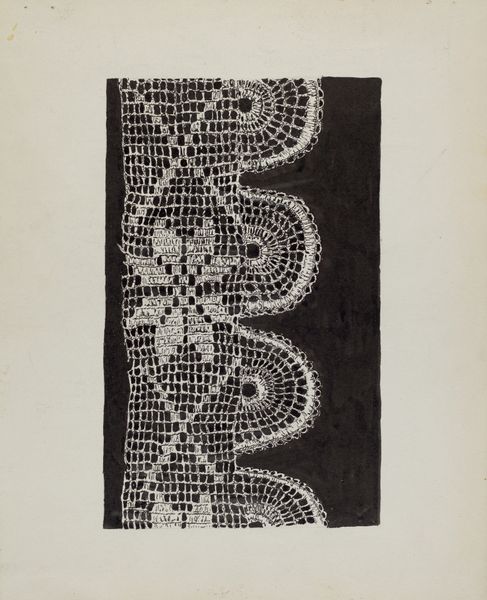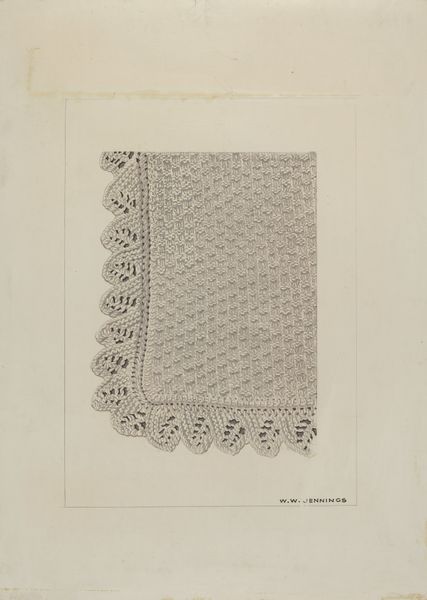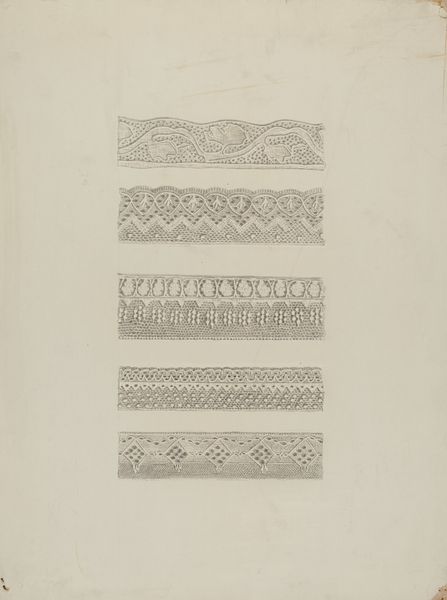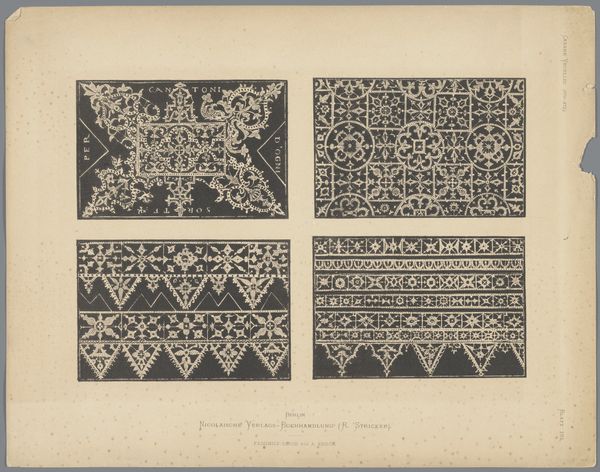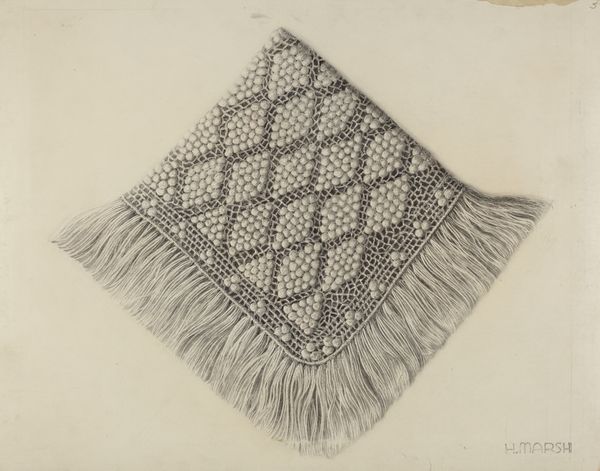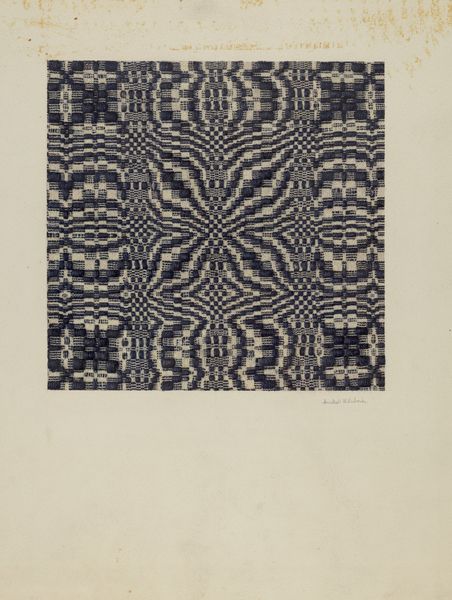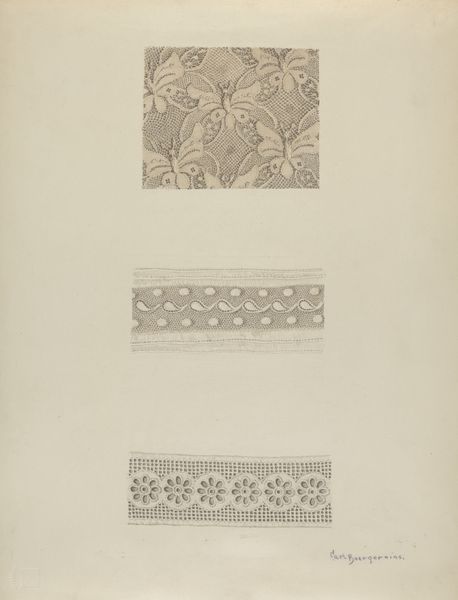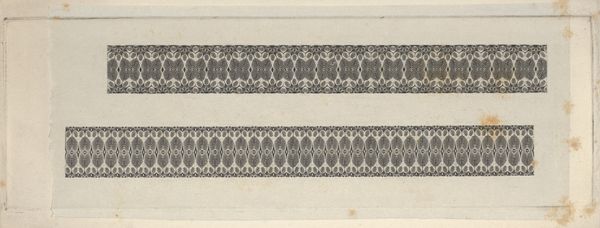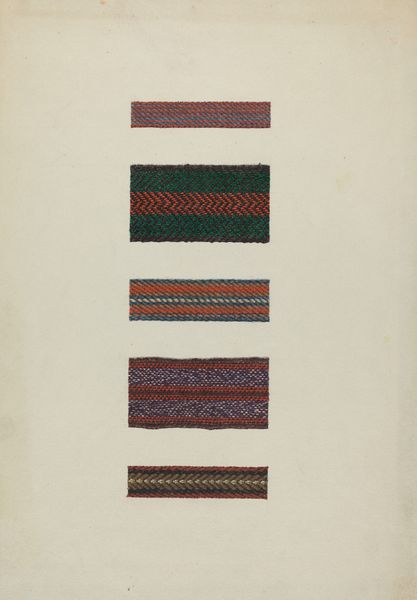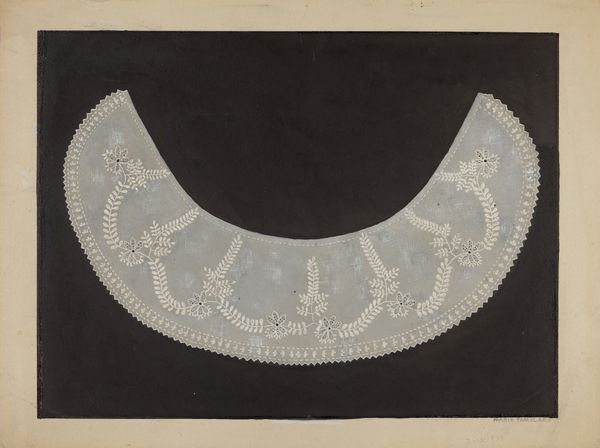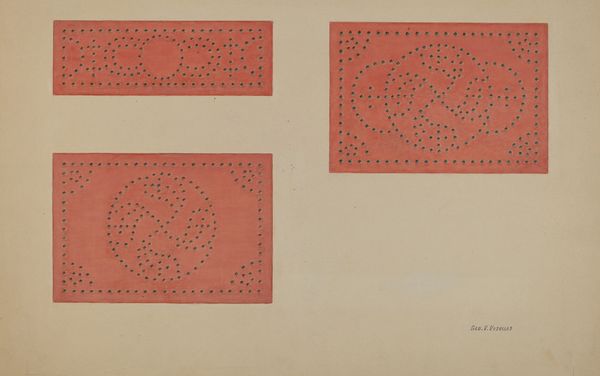
drawing, graphic-art, paper, pen
#
drawing
#
graphic-art
#
paper
#
geometric
#
line
#
pen
#
decorative-art
#
watercolor
Dimensions: overall: 36.4 x 26.3 cm (14 5/16 x 10 3/8 in.)
Copyright: National Gallery of Art: CC0 1.0
Curator: This is Edward L. Loper's "Lace on Wax Doll," a drawing crafted around 1936 using pen, paper, and watercolor. Editor: It gives me an unsettling feeling, actually. The severe geometry paired with the suggestion of delicate craft feels…oppressive, almost. Like ornamentation used to constrict, not decorate. Curator: That's an interesting read. Loper's choice to isolate these decorative elements invites questions about their original context. Wax dolls, often associated with childhood and innocence, take on a different tone when stripped of their narrative. Was Loper commenting on the ways societal expectations stifle individuality, even from youth? Editor: Precisely! The lace, conventionally a symbol of refinement, is presented in stark black and white against such rigid shapes. I think Loper masterfully politicizes the traditional association of these embellishments. The piece evokes the paradox of ornamentation that is meant to adorn, but can also bind. Curator: Absolutely. It’s compelling to view the work through a feminist lens. The wax doll, typically a passive object, challenges conventional beauty standards when reimagined. What role do art institutions play in upholding—or subverting—these historical norms around beauty? Editor: Good point. Considering the work's likely exhibition context, there's certainly potential to see the piece as an ironic social commentary by placing decoration inside geometrical structures to imprison. Curator: What started as simple, illustrative images of adornment transforms into a conversation about the constructs of beauty and the systems that reinforce them. Editor: This artwork pushes the viewer to think critically about representation, not only of objects but also, and maybe more importantly, of ideas that might at first sight seem obvious.
Comments
No comments
Be the first to comment and join the conversation on the ultimate creative platform.
